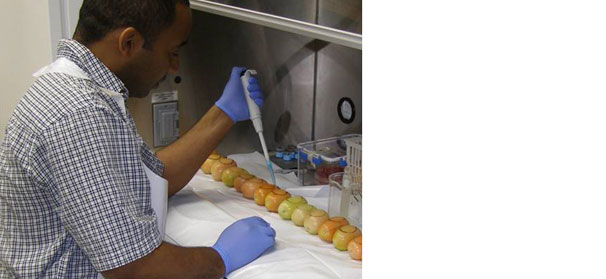
May 21, 2012Maintaining cold chain helps avoid salmonella
A new study indicates that maintaining cold storage throughout the entire supply chain can help avoid a possible recurrence of salmonella in produce.
Studying washed and non-washed jalapeno peppers and Roma tomatoes, Steven Pao, a professor of food safety and microbiology at Virginia State University, and other researchers determined that washing is in fact an effective way to remove salmonella. That has been a long-held tenet of postharvest handling. The researchers said that while water washing is effective, roller and brush washing reduces salmonella counts at significantly higher rates.
However, there has been no clear mandate when it comes to storage temperatures after washing, Pao said. And the study shows that the potential of salmonella to “rebound” increases when produce moves on to be kept in humid storage at warm temperatures.
“Washing is very effective in reducing salmonella on the produce we tested,” Pao said. “But if, after washing, you place the produce in a storage bag at temperatures higher than 70 degrees – that may lead to a salmonella rebound.”
Pao said the findings are significant because produce is often kept at humid conditions to maintain quality. But for safety’s sake, humid can’t mean warm.
“In that case, a temperature control would be necessary to prevent a rebound,” he said.
Not everyone follows the same protocols, either.
“I think the major part of the industry knows they should refrigerate produce,” Pao said. “How thoroughly the cold chain has been monitored and controlled – that, I think, can be a question for some areas.”
The study reports that during storage for more than three days at 59˚ F, 69.8˚ F and 95˚ F, salmonella levels on both tomatoes and peppers increased.
“Cold storage with high humidity, which is commonly utilized by industry sectors within the modern produce distribution chain, is capable of preventing the population rebound of salmonella on produce,” according to the report, which recommends a maximum temperature of 50˚ F.
Bottom line? Even though produce has been washed, depending on what happens after, it might not be enough. Handlers would do well to keep it refrigerated all along the chain. And consumers should follow FDA recommendations to wash fruits and vegetables under running water just before eating, cutting or cooking.
“This study just shows that the combination of temperature and humidity after (washing) is critical,” Pao said. “That should be placed into consideration in risk assessment or auditing or inspections.
“I think we should look at this as a potential area of concern.”
By Kathy Gibbons, Editorial Director
















